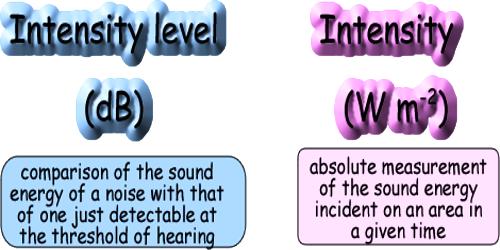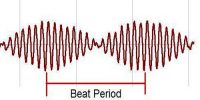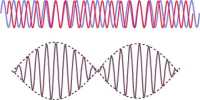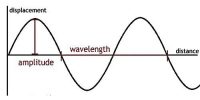Intensity Level of Sound
The loudness of a sound is the magnitude of the auditory sensation produced by the sound. It depends upon both intensity and frequency. It is determined by the intensity of sound. Loudness increases with intensity, but not to the same proportion. The relation between loudness and intensity is discussed below.
Intensity: Intensity of sound is a physical quantity. We define intensity as:
Amount of energy propagated per second through a unit area placed perpendicular to the direction of propagation of sound is called intensity. It is denoted by I. Unit of intensity is Js-1 m-2 or Wm-2.
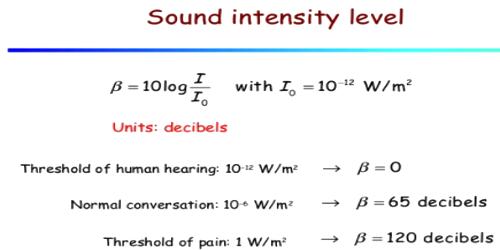
It is mentioned earlier that loudness increases with intensity; but not proportionately. According to Weber Fechner loudness is proportional to the logarithm of intensity. If S is the loudness and I is the intensity, then according to this law relation between them is,
S ∞ log10I
or, S = K log10I
Although the unit of intensity is Wm-2, but in practice it is measured with respect to the standard intensity. It is needed to know what is called standard intensity.
Standard intensity: Threshold of audibility of 1000 Hz tone is taken as equal to 10-12 Wm-2 and it is called standard intensity. That means, intensity of 10-12 Wm-2 of 1000 Hz tone is called standard intensity. It is denoted by I0. All intensities are measured with respect to I0.
Intensity level: The difference of loudness between the intensity of a sound and the standard intensity is called intensity level. In other words, the ratio of the logarithm of intensity of a sound and standard intensity is called the intensity level of that sound. It is normally expressed in the unit decibel (dB). Decibels measure the ratio of a given intensity I to the threshold of hearing intensity , so that this threshold takes the value 0 decibels (0 dB).
